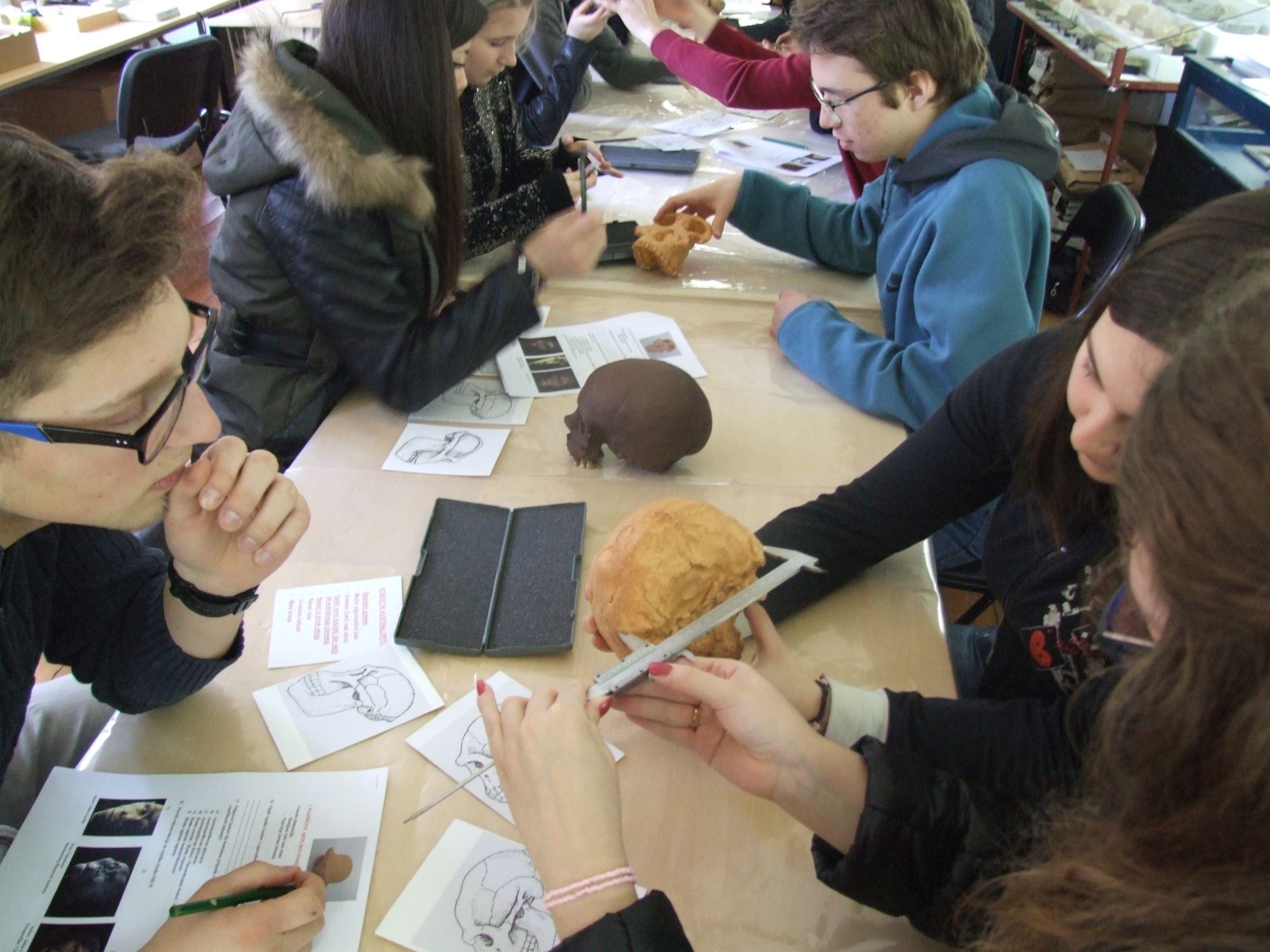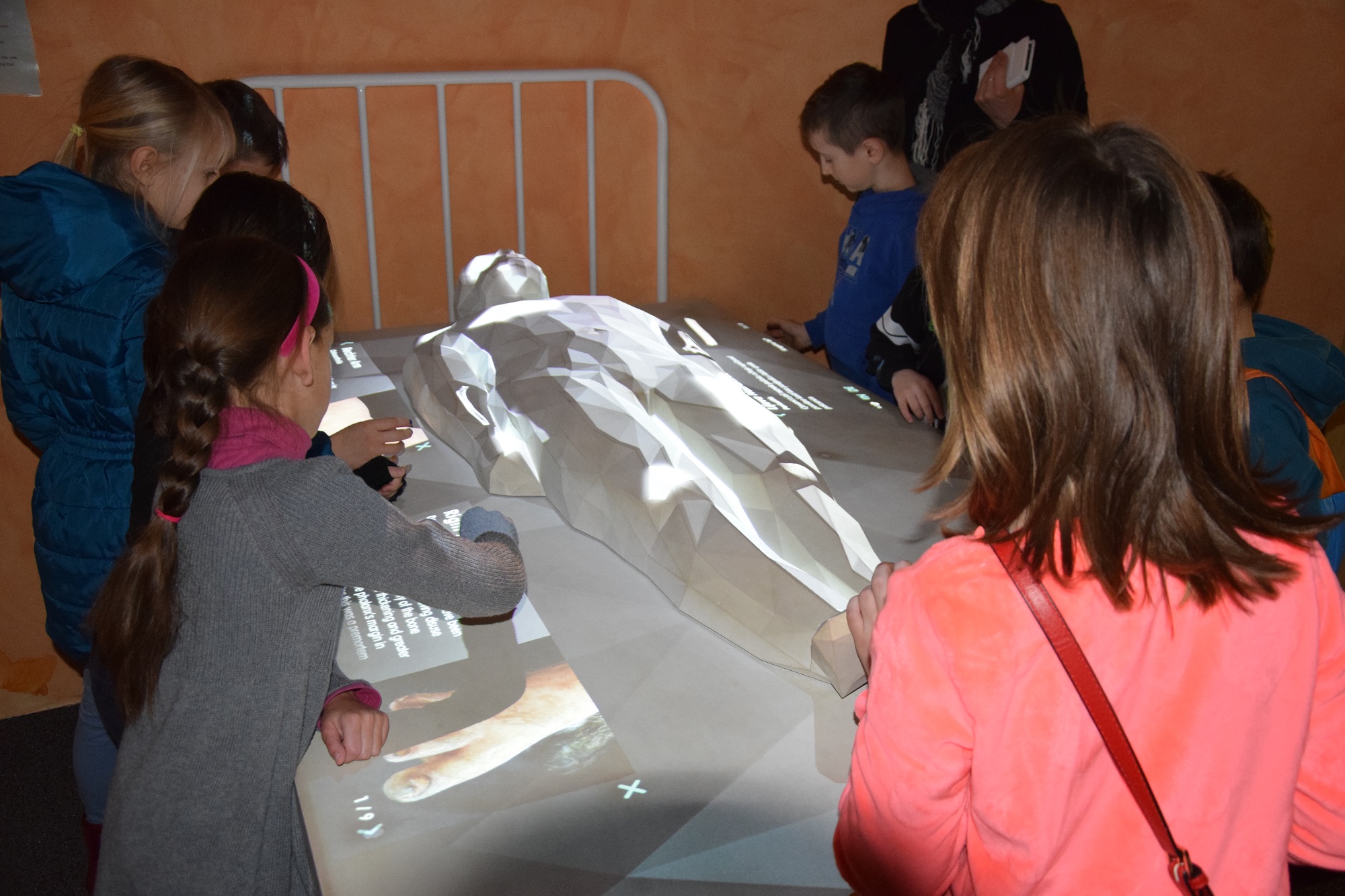Krapina Neanderthal Museum (Muzej krapinskih neandertalaca) is situated on the Hušnjakovo hill, a unique paleoanthropological site. The Hušnjakovo site was discovered in 1899 by the famous Croatian palaeontologist Dragutin Gorjanović-Kramberger and it bore the biggest collection of Neanderthal fossil bones found in one place. In total, about 900 bones and 1.200 stone tools belonging to Neanderthals were found; as well as 2.400 animal bones. Today, the museum offers an insight into the Neanderthals’ life and an exciting journey through geological history via its numerous interactive contents.
Due to your privacy settings, Google Maps is blocked. Hit "Show Google Maps" to activate maps. Please also note the terms of our privacy policy.
Neanderthal diorama
The largest Neanderthal diorama is located in the Krapina Neanderthal Museum. The 17 hyper realistic reconstructions are made by French artist Élisabeth Daynès, depicting the everyday life of Krapina Neanderthals.

Organic architecture
The museum building is immersed between two hills with only the front facade visible, thus being assimilated into the surrounding nature. The facade consists of yellow miocene sandstone which makes up the excavation site. The interior is „raw“ as it is made of concrete, simulating the prehistoric habitat of a Neanderthal man. The visitor feels sheltered and detached from the modern outside.


Krapina in the 19th century
The first part of the museum recreates life, traditions and knowledge of Krapina residents from the 19th century. As one moves forward, one can follow the development of natural sciences and different theories of human origins. At the end of this part, the visitor unearths the findings of Hušnjakovo.
Journey through deep time
Visitor unravel the mysteries of how all of it came to be. This part of the museum consists of a spiral ramp simulating the everchanging circle of life, marking important milestones in Earth’s history within a 24-hour-format.

The life of Neanderthals
In this part of the museum, the visitors get to know the Neanderthals’ morphology, illnesses, culture, behaviour and environment. One will learn how the Neanderthals were intelligent, sentient and highly organised as a society. Lastly, the differences between modern humans and ancient ones are presented.

The Hušnjakovo site
Take a stroll through the forest and discover the remains of the cave that once was a home to the Krapina Neanderthals.





